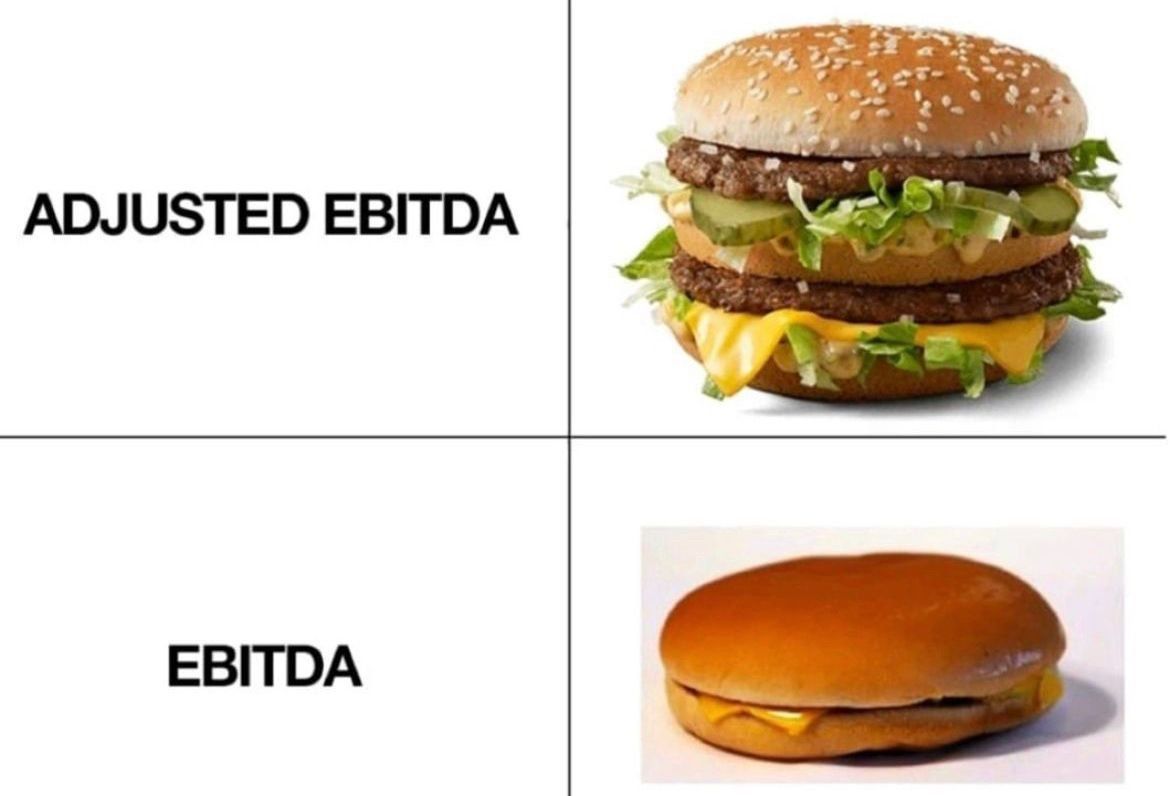EBITDA is one of the most used financial metrics
Quote from bsdinsight on 29 April 2025, 12:00EBITDA is one of the most used financial metrics
But is it a good one?
Let’s find out
1️⃣ What is EBITDA?
EBITDA stands for:
• Earnings
• Before
• Interest
• Taxes
• Depreciation
• AmortizationIn other words, it shows you what the company earns before costs like interest, taxes, depreciation and amortization are subtracted.
2️⃣ How can I calculate it?
EBITDA = Net Income + Taxes + Interest Expense + Depreciation & Amortization
OR
EBITDA = EBIT + Depreciation & Amortiziation
3️⃣ EBITDA margin
You can easily calculate the EBITDA Margin as follows:
EBITDA margin = EBITDA / Revenue
You want most revenue to be translated into EBITDA
4️⃣ Adjusted EBITDA versus EBITDA
A lot of companies also use the Adjusted EBITDA instead of EBITDA.
Adjusted EBITDA removes one-time, irregular, and non-recurring items that distort EBITDA.
This will result in a higher figure.
5️⃣ EBITDA is NOT the same as Free Cash Flow
In general, free cash flow is a way more reliable metric than EBITDA.
Free Cash Flow shows you what a company REALLY earns in cash after deducting all expenses.
6️⃣ What’s all the fuss about?
Charlie Munger once said the following:
“I think that, every time you see the word EBITDA, you should substitute the words bullshit earnings.”
But why?
The issue with EBITDA is that it removes real expenses.
That’s why I would never look at EBITDA to analyze a company.
EBITDA is one of the most used financial metrics
But is it a good one?
Let’s find out
1️⃣ What is EBITDA?
EBITDA stands for:
• Earnings
• Before
• Interest
• Taxes
• Depreciation
• Amortization
In other words, it shows you what the company earns before costs like interest, taxes, depreciation and amortization are subtracted.
2️⃣ How can I calculate it?
EBITDA = Net Income + Taxes + Interest Expense + Depreciation & Amortization
OR
EBITDA = EBIT + Depreciation & Amortiziation
3️⃣ EBITDA margin
You can easily calculate the EBITDA Margin as follows:
EBITDA margin = EBITDA / Revenue
You want most revenue to be translated into EBITDA
4️⃣ Adjusted EBITDA versus EBITDA
A lot of companies also use the Adjusted EBITDA instead of EBITDA.
Adjusted EBITDA removes one-time, irregular, and non-recurring items that distort EBITDA.
This will result in a higher figure.
5️⃣ EBITDA is NOT the same as Free Cash Flow
In general, free cash flow is a way more reliable metric than EBITDA.
Free Cash Flow shows you what a company REALLY earns in cash after deducting all expenses.
6️⃣ What’s all the fuss about?
Charlie Munger once said the following:
“I think that, every time you see the word EBITDA, you should substitute the words bullshit earnings.”
But why?
The issue with EBITDA is that it removes real expenses.
That’s why I would never look at EBITDA to analyze a company.


